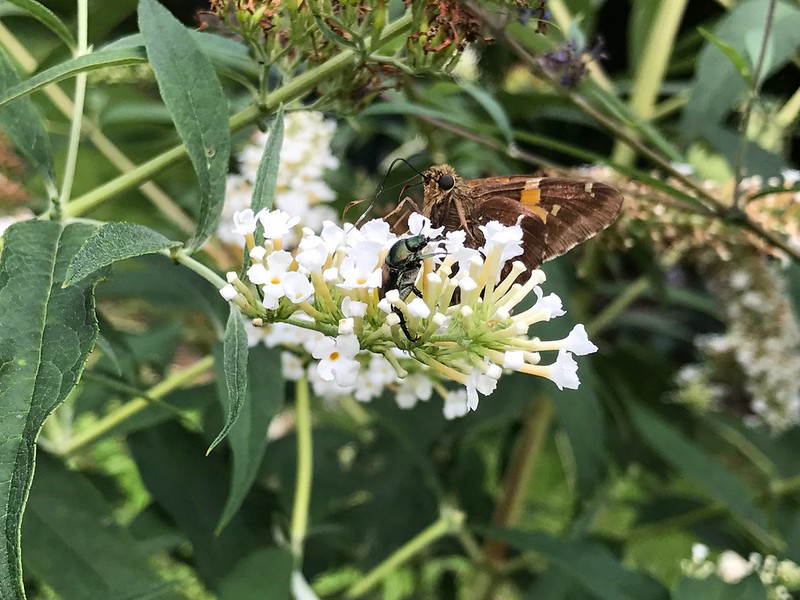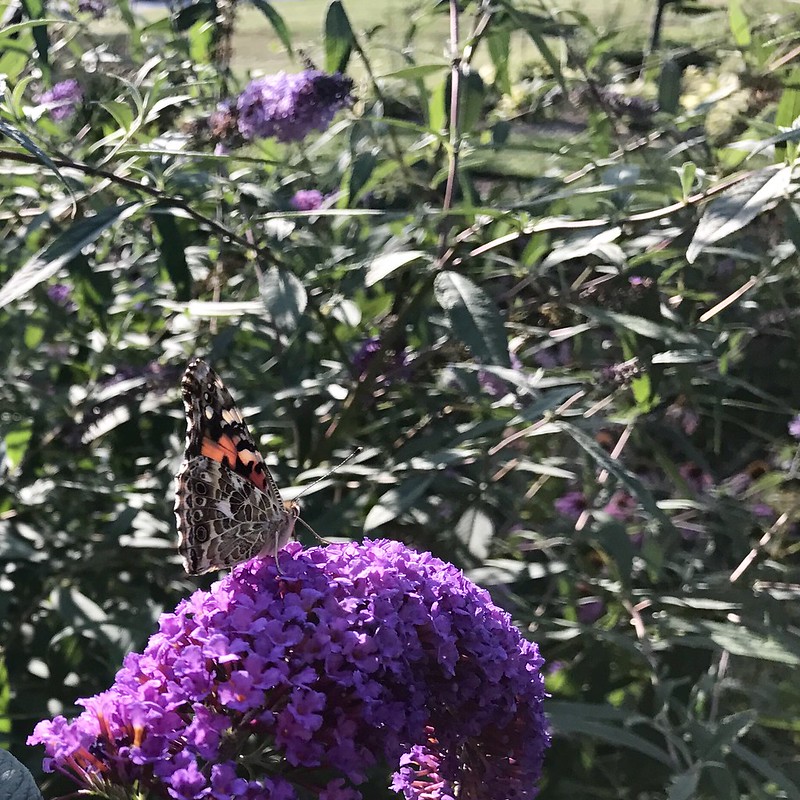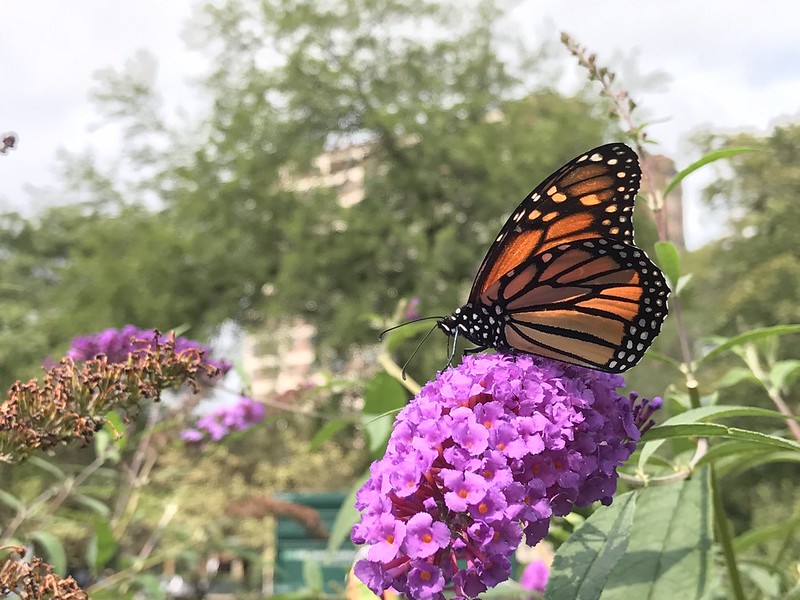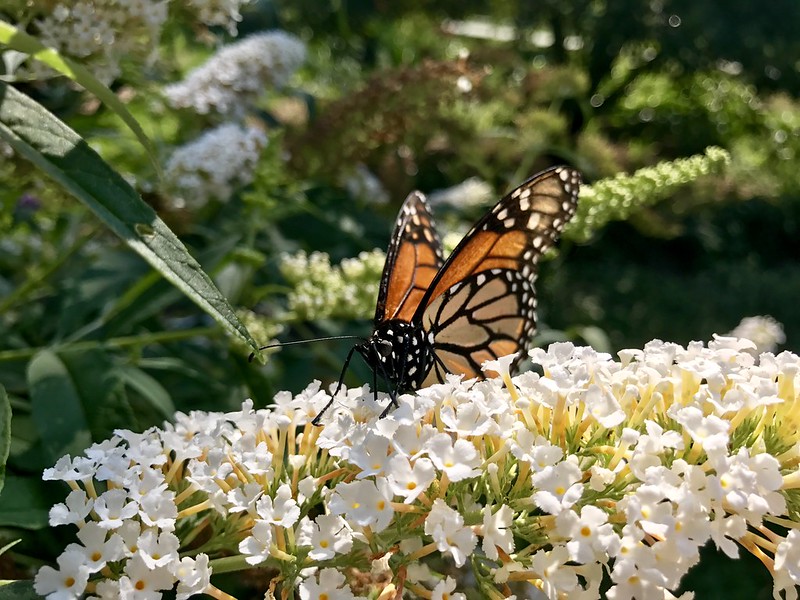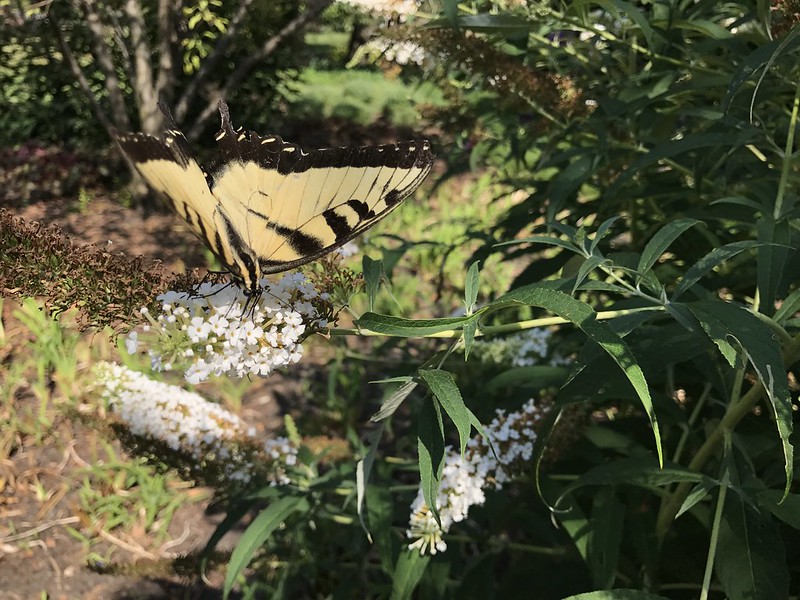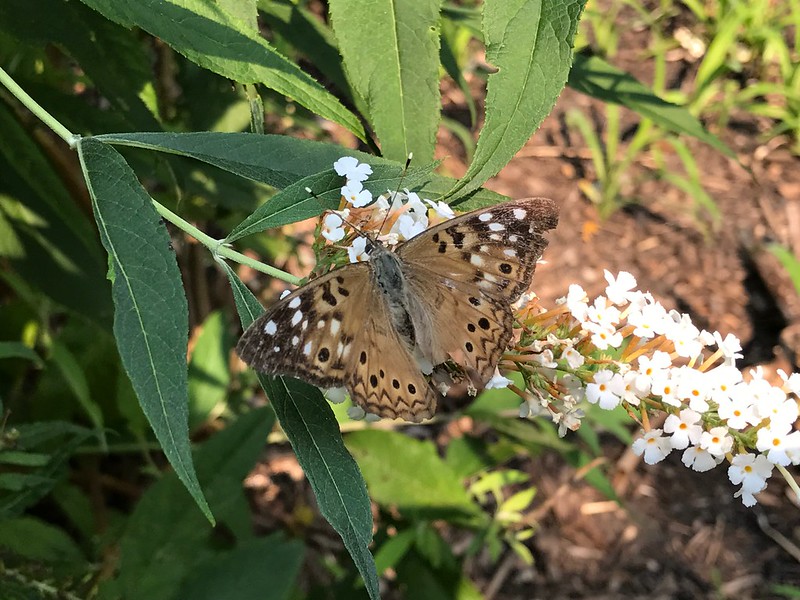Last year I saw what seemed like dozens of Hemaris diffinis and H. thysbe moths around one of the butterfly bushes at Perennial Garden. This summer I’m seeing very few — mostly only one at a time. I’ve seen only one giant swallowtail, the first butterfly I noticed there on my way home from the farmers’ market. I haven’t seen one since.
At least I’m seeing monarchs, tiger and black swallowtails, red-spotted purples, several kinds of skipper, and a few hackberry emperors. I’m terrible at identifying trees, but several of the trees look like hackberry trees. The hackberry is to the hackberry emperor what milkweed is to the monarch — sole food for the caterpillar.
On August 11, a very pale hackberry emperor landed on my shirt and stayed until I had to start walking and gently shooed it off.
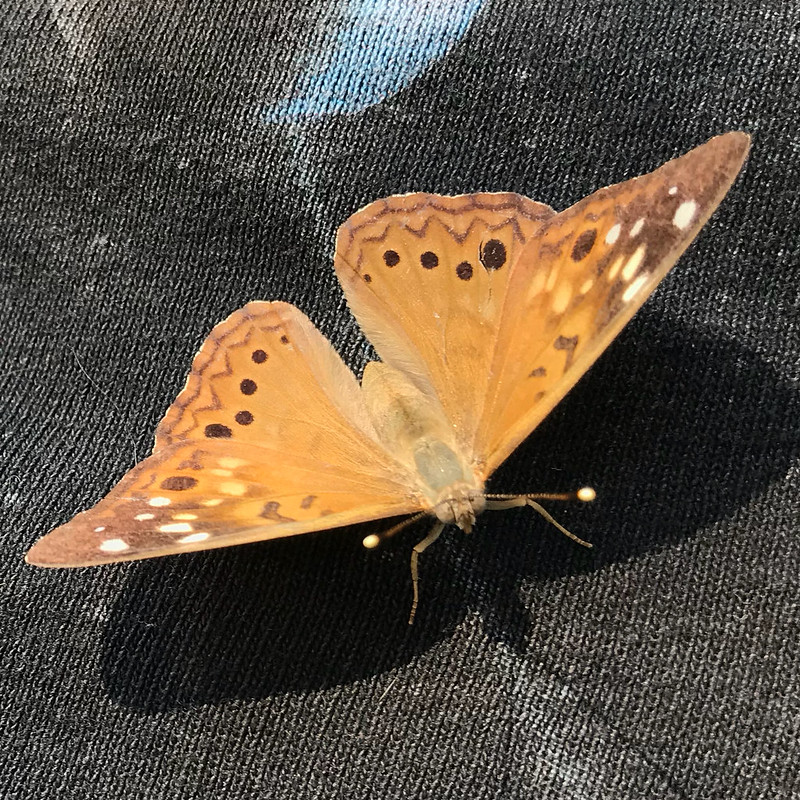
I say “pale” because hackberry emperors are usually darker.

Last week I was about to walk my bike through the grass from one bush to another when a hackberry emperor landed on my arm. It proceeded to probe about with its proboscis. It went at it for several minutes, even after I started walking again, arm raised in an awkward position. After a few moments it flew off.
Assuming it was sucking up sweat, I looked up the behavior, called “puddling.”
By sipping moisture from mud puddles, butterflies take in salts and minerals from the soil. This behavior is called puddling, and is mostly seen in male butterflies. That’s because males incorporate those extra salts and minerals into their sperm.
When butterflies mate, the nutrients are transferred to the female through the spermatophore. These extra salts and minerals improve the viability of the female’s eggs, increasing the couple’s chances of passing on their genes to another generation.
What could be more charming than knowing your sweat will help produce more hackberry emperors? I may not have children and grandchildren, but I will have butterflies!


